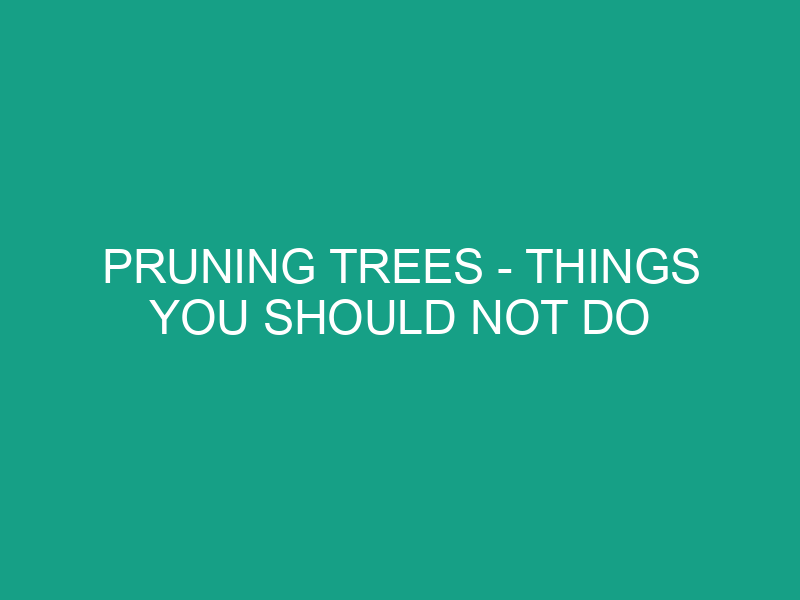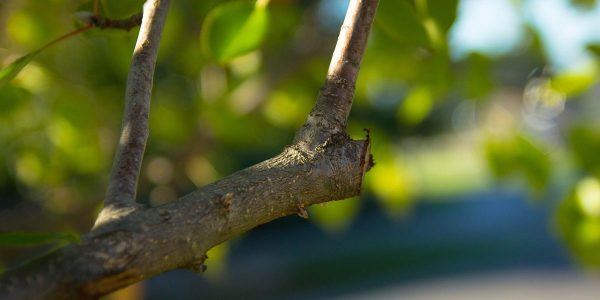
Whether you’re pruning a tree in the spring or the fall, there are a few things you should avoid doing. These include leaving a stub, pruning too soon, and pruning too much.
Pruning in the fall
Taking care of your trees can save you time and increase the value of your property. Pruning is the process of cutting a tree or shrub to maintain its shape or size. It can also be used for safety or maintenance purposes.

The best time to prune a tree is in the fall. This is because the temperature is cooler, which slows down the growth of new branches. Pruning in the fall also helps to keep the tree healthier, by removing dead branches. It also helps to promote new growth in the spring.
The best time to prune trees depends on the Landscaping Contractor San Marcos. Some woody plants prefer to be pruned in the late winter or early spring, while others need to be pruned after flowering or early in the summer. The right time to prune a tree depends on the health of the tree and the amount of growth that needs to be removed.
If you plan on pruning a mature tree, wait until spring to do so. Trees are susceptible to diseases and insect infestation during the warmer months. Adding to this risk, the warmer weather can damage new growth. Trees also need time to heal. When pruning a tree, the most important thing to keep in mind is to remove branches that are diseased or dead.
The first step to pruning a tree is to make an inventory of all trees on your property. This can be done online or by talking to your local Cooperative Extension Service. The Cooperative Extension Service has a certified arborist on staff. They can also offer free advice.
When pruning a tree, you should take the time to cut the branches back to the main trunk. This is called the one-third rule. The rule is that only one-third of the canopy should be removed in one pruning cycle. This helps to stimulate regrowth without damaging the tree.
The first cut should be made just outside the collar, or the point where the lateral bud meets the main branch. This stops the limb from ripping. The next cut should be made flush with the next branch, and the stub should be removed.
Pruning in the spring
During the spring, trees are at risk of fungus, insects, and disease. Taking the proper precautions to prune trees can help eliminate these risks and keep your trees healthy.
There are several types of trees and shrubs that are best pruned in the spring. These include those that produce buds. Pruning these trees in the spring can trigger new growth. However, pruning during this time can also lead to disease.
Spring is also the perfect time to plant additional trees. Most trees need pruning, but the right time depends on the type of tree. You can also prune tree branches to harvest fruit.
Pruning a tree in the spring can also help increase air circulation and improve your view. Raising the canopy can also help shape the overall growth pattern of the tree. However, you should avoid pruning branches that are too close to utility lines. This could cause accidents.
In addition to improving your view, raising the canopy will also increase the amount of air circulation and sunlight access. This will help your tree heal faster.
The spring is also a good time to prune trees that bloom in the summer. If you prune these trees in the spring, you may have a lower bloom total. However, this will also decrease the number of new buds on the tree. This is because the buds will be smaller and have to produce a larger amount of energy to bloom.
It is also a good idea to prune trees in the spring to eliminate dead branches. This will allow you to easily see the structure of the tree and remove any dead branches.
Some trees, like hydrangeas, can be pruned in the spring. Depending on the type of hydrangea, you may need to prune the tree in the spring to promote healthy new growth.
Spring pruning is not recommended for most trees. The best time for pruning is in the late winter and early spring. This is because new growth is killed by cold temperatures. Also, the heat and cold reduce the risk of frostbite.
When pruning trees in the spring, you should be careful not to rub together branches. This can lead to injury and disease. Also, you should make sure to disinfect your tools with isopropyl alcohol. This will ensure that your pruning tools do not contaminate your trees.
Pruning in the dormant stage
Choosing the right time to prune trees in the dormant stage is important. Pruning during this time can have a beneficial impact on the health and growth of a tree. It reduces stress on the plant while giving it time to heal.
The dormant period is generally from November to March. It is when trees go into hibernation and lose leaves. However, trees that bloom and produce fruits need to be pruned at other times of the year.
Doing this will improve the quality of your leaves, as well as the appearance of your tree. It also ensures that the tree receives adequate light and water. It also makes the tree healthier and stronger.
Trees are pruned during the dormant season because it reduces the risk of major diseases. It also reduces the risk of pests and fungus infections. It also reduces the risk of limbs breaking during the winter. It also reduces the risk of overgrowth.
Pruning trees in the dormant stage is also a good way to promote new growth. It is also a good time to shape a tree. A trained arborist can easily identify the best places to prune.
Winter pruning is also an excellent time to clean out dead or damaged branches. This can include pruning a tree that has been damaged by an accident. When a tree is damaged, the cut wound can be easily infested by fungus and insects. Also, open cuts increase the risk of mold and fungus infections.
Pruning during the dormant season also prevents the tree from forming suckers. Suckers take nutrients away from the tree and can also be dangerous.
When trees are pruned during the dormant period, they can be used as a source of energy to help the tree heal. They are also able to use the nutrients found in the damaged branches.
Pruning trees during the dormant season also prevents fungus and disease from spreading. During the spring, trees that are pruned can be re-shaped and re-grown. This is a great way to improve the look of your landscape and increase the value of your home.
Avoiding leaving a stub
Using the wrong technique when pruning trees can result in the formation of a stub. These unsightly cuts can be an entry point for pests and can prevent the tree from sealing the wound. This can lead to the spread of disease and decay in the tree.
Ideally, pruning trees should be done at least once a year, or more if the tree is old. This is to maintain the tree’s health and prevent it from becoming out of control. Trees should also be pruned in the fall to stimulate new growth.
Proper pruning involves cutting branches at the collar, or raised area surrounding the branch attachment. These collars are typically found on the base of most branches. These collars are helpful in allowing the wound to heal and also help the tree seal off the wound. If you are not sure about the proper way to prune trees, it is best to hire a professional to do the job. They have the experience and tools to avoid harming your tree.
When cutting large branches, it is best to do it with a three-point cut. A three-point cut involves cutting up and then down a few inches from the initial cut. This allows the branch to be cut back to the branch collar, and will minimize damage to the branch collar. This technique is recommended for limbs over 2 inches in diameter.
It is also important to use clean cuts when pruning trees. A good way to do this is to disinfect your pruning shears and tools. This will prevent the spread of disease and other harmful chemicals.
Before starting pruning, walk around the tree to get an idea of what it looks like. This will also help you evaluate your next steps.
A good way to avoid leaving a stub is to cut branches with a 45-degree angle. These cuts will avoid the bark from being stripped away from the tree. This can be done by holding the upper cutting blade at a distance from the trunk, and then cutting up to two inches from the trunk.